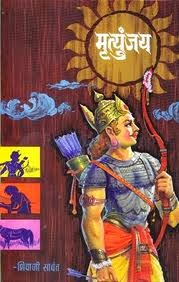Movie Review: Pather Panchali
 |
| The young Apu in Pather Panchali |
The film depicts abject poverty and yet the children derive joy from the simple pleasures that the rustic life offers: trees, fruits, dusty paths, rains, lush green grasses, songs of birds and flowers. The story of the film is narrated through Apu's point-of-view that begins from an infant to a young boy discovering the world around him. The film documents his desire to join the jatra, the time spent in school, the first time he sees a factory and a train with very fine detailing. Hence, the film presents a touching picture of the lives of ordinary people in rural settings.
The film focusses extensively on natural imagery by capturing the raindrops on the pond, the rustling wind, the roads in the jungles filled with leaves, the reflections of the sweetmeat seller falling over the pond. The music by Pandit Ravi Shankar through his sitar is firstly at odds with the film's visuals but later comes across as a logical outcome of the events.
Pather Panchali is Satyajit Ray's debut film and he establishes the fact that he is a master filmmaker way ahead of his times. The use of black-and-white photography along with his cinematographer Subrata Mitra is effective. The way he captures even the seemingly mundane chores such as grating coconuts confirms that he is a natural filmmaker. Some of the scenes in this deeply poetic work on celluloid are excruciatingly realistic. His camera displays an astute understanding of the world through Apu's eyes, mind and lips.
The only major complaint I had was with the pacing. At 2 hours 6 minutes, it has an incredibly slow. There are a number of sequences which go on for longer than necessary such as the train scene which itself occupies about four minutes. In the time of Twitter and Android phones, I wonder how many of us would have the patience to sit through such a slow movie.
For a movie that is claimed to be the first part of "The Apu Trilogy", it is surprising to know that Apu's participation in this film is minimal. The film is a textured document and the simplicity in its narrative style gives it a feeling of universality. It has a poetic quality despite narrating the tale of ordinary villagers in very ordinary circumstances yet it provided insights into the tragedies of human existence. This is surely a must watch for those who seek real, expansive yet fine-tuned cinematic experiences.



Comments